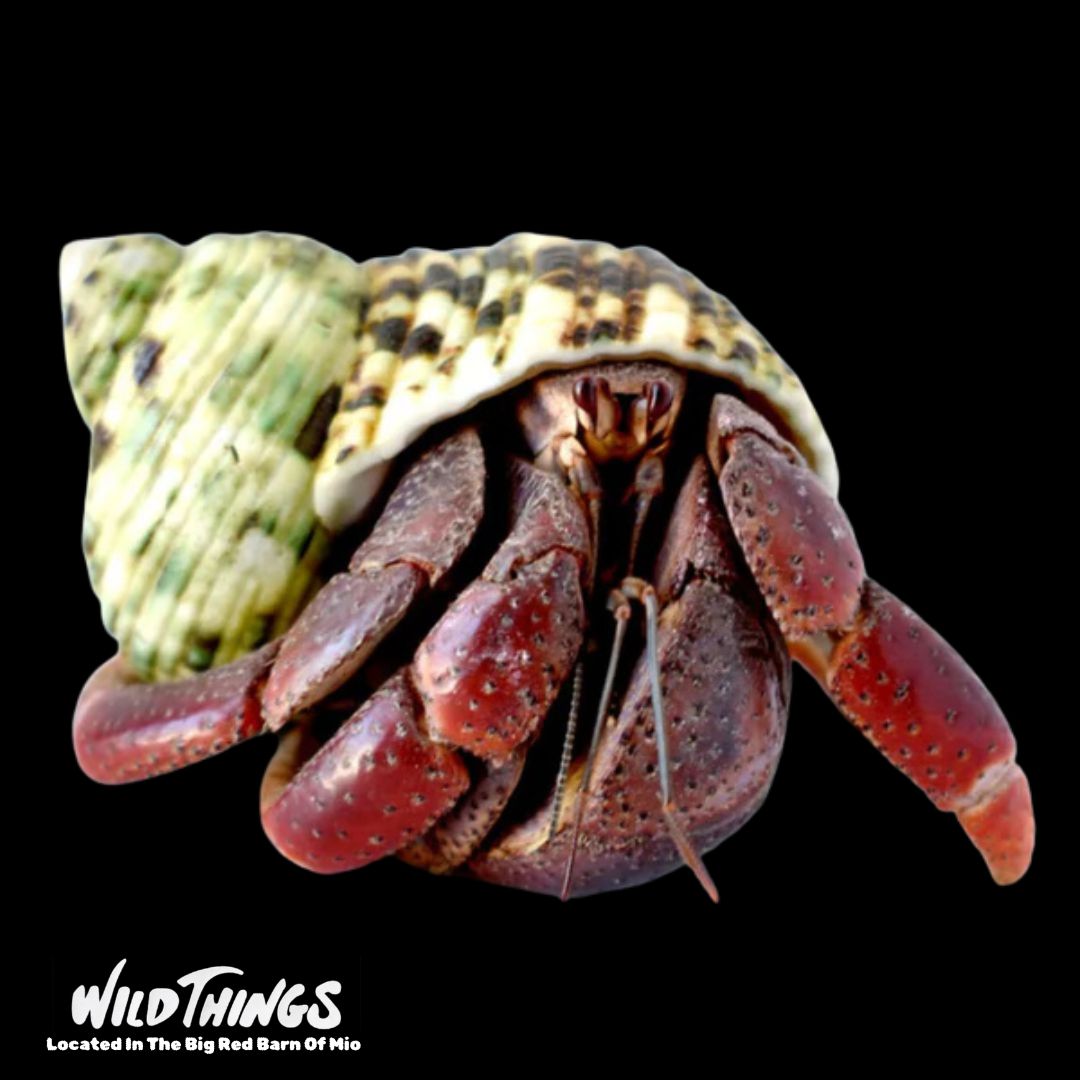AuSable River Outdoors
Haiti Hermit Crab
Haiti Hermit Crab
Couldn't load pickup availability
Species: Haiti Hermit Crab
Scientific Name: Pagurus spp
Origin: Native to the west Atlantic, Belize, southern Florida, Venezuela, and the West Indies.
Lifespan: 10+ Years
Size: 2-6 Inches
Enclosure Type: All habitats should be secured with a tightly fitting lid to prevent escape. Glass tanks are preferred over plastic ones, since glass is better at retaining heat and humidity. Pet hermit crab habitats are ideally placed in a quiet, low-traffic area of the home. Keep habitats in a draft-free area that’s not near an air conditioner or in direct sunlight.
Enclosure Size: 10-gallon glass tank for 1 or 2 hermit crabs
Substrate: Hermit crabs are natural-born diggers! The bottom of a pet hermit crab’s enclosure should be lined with a layer of substrate that’s deep enough to protect a hermit crab’s delicate body while they dig, burrow, and molt. As a rule of thumb, the substrate should be at least three times deeper than the height of the largest hermit crab in the enclosure. Commercially available sand, mixed with coconut fiber bedding in a 5:1 ratio, is ideal. Sand must be washed, dried, and sterilized before use to ensure its pathogen-free. Moss can also be added to the mixture to boost humidity. Sand should be kept moist enough for the particles to clump together but not be too wet. Avoid wood shavings, such as pine and cedar bedding, as they have oils that can irritate pet hermit crabs’ skin and respiratory tracts and cause illness.
Décor: Shells. Hermit crabs can't produce their own shells, so they need 3-5 empty shells in assorted sizes to move into as they grow. Climbing decor such as driftwood, logs, branches, lava rock, plastic plants, coral, and good hiding spaces are also good decor options for your hermit crab.
Water: Pet hermit crabs need constant access to two non-metal, non-porous dishes of water that are shallow enough for the crab to enter comfortably. One water dish should be filled with fresh dechlorinated water, while the other should be filled with saltwater with a specific gravity (salt level) of 1.021–1.026. The water inside the bowls should be no deeper than ¼ to ½ inch, depending on the hermit crab’s size. A natural sea sponge should also be placed inside each bowl to help the crab climb in and out easily, and to prevent accidental drowning. Sponges should be disinfected and changed regularly to prevent fungal and bacterial growth.
Temperature: The warm end of a pet hermit crabs habitat should be kept at 80 F, while the cooler end/nighttime temperatures should be around 70 F. Pet parents must check the temperatures of the habitat daily. Two thermometers—one in the warm area and one in the cool area—should be placed in the enclosure so both zones can be checked at once. A digital point-and-shoot thermometer can also be used to instantly read habitat temperatures.
Humidity: A pet hermit crab’s enclosure should have a humidity level of 70 to 90%. A hygrometer (humidity gauge) should be used to measure the enclosure’s humidity daily. Hermit crabs need humidity in their environment to stay hydrated and keep their gills moist so they can breathe. If the humidity in a pet hermit crab’s enclosure falls too low, hermit crabs will suffocate and die. Pet parents should maintain humidity levels by misting the enclosure with dechlorinated water daily, or more often if needed.
Lighting: The wattage needed for the heat bulb will vary depending on the size of the enclosure, the distance of the bulb from the crab, and the ambient temperature of the room in which the enclosure is kept. Adjust the wattage of the bulb to maintain the recommended temperature gradient within the tank. Some light bulbs provide not only light to the tank but also heat and/or ultraviolet light. Pet parents should check the light sources they are considering, so they know exactly what their function is in the tank. Hermit crabs are nocturnal. To maintain a healthy day/night cycle, low-wattage bulbs should only be kept on for 10–12 hours a day. At night, turn off lights inside the hermit crab’s enclosure or switch to a nocturnal or infrared light.
Type Of Diet: As omnivores, hermit crabs enjoy a range of foods
Types Of Food: Commercial hermit crab diets, Fruits, Vegetables, Nuts, and Brine shrimp
Feeding Schedule: Once daily
Supplements: Pet hermit crabs also need a calcium supplement to help keep their exoskeleton healthy.
Share

